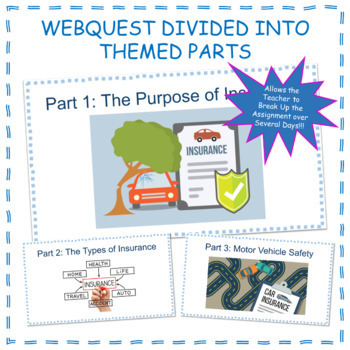Not known Facts About Pacific Prime
Not known Facts About Pacific Prime
Blog Article
Some Known Questions About Pacific Prime.
Table of ContentsPacific Prime for BeginnersThe Ultimate Guide To Pacific PrimeThe 9-Second Trick For Pacific PrimeFacts About Pacific Prime Revealed
In a lot of states, the insurer is needed to send you a copy of the modifications to your plan. It is necessary that you read Endorsements or Motorcyclists so you recognize just how your plan has actually altered and if the plan is still appropriate to meet your requirements. To acquire a copy of your insurance coverage plan, please contact your insurance representative or company.
The Institute of Medication (IOM) Board on the Effects of Uninsurance launches an extended assessment of proof that addresses the value of health insurance policy coverage with the publication of this report. Coverage Matters is the initial in a series of six records that will be provided over the next two years documenting the reality and repercussions of having an estimated 40 million individuals in the USA without medical insurance coverage.

An Unbiased View of Pacific Prime
The objective of this series of research studies is to redouble policy focus on a historical trouble. Complying with the longest economic growth in American background, in 1999, an estimated one out of every 6 Americans32 million adults under the age of 65 and greater than 10 million childrenremains without insurance (Mills, 2000).

Ten percent of the population represent 70 percent of health care expenses, a connection that has actually continued to be consistent over the previous 3 decades (Berk and Monheit, 2001) - maternity insurance for expats. Hence medical insurance continues to offer the function of spreading threat even as it increasingly finances routine treatment. From the viewpoint of healthcare service providers, insurance coverage lugged by their individuals helps safeguard a profits stream, and neighborhoods profit from monetarily feasible and secure healthcare professionals and establishments
Government supplies medical insurance to populations whom the private market may not offer successfully, such as disabled and elderly persons, and populaces whose accessibility to health and wellness care is socially valued, such as kids and expecting visit their website females. The utmost ends of health insurance policy protection for the individual and communities, consisting of office areas of staff members and employers, are improved health results and lifestyle.
Unknown Facts About Pacific Prime
Employees rate health insurance coverage first by much in relevance amongst all the advantages supplied in the office (Salisbury, 2001). Although there have been substantial investments of individual and public funds to supply wellness insurance policy, lots of people still have no protection. Despite considerable coverage of study findings and wellness care research results, the public remains confused and misinformed concerning Americans without medical insurance and the ramifications of doing not have coverage.

Without question, the complexity of American healthcare financing mechanisms and the wealth of resources of details contribute to the public's complication and apprehension concerning health insurance policy statistics and their interpretation. This report and those that will follow objective to boil down and offer in readily reasonable terms the considerable research that bears on concerns of health insurance policy coverage and its relevance.
Fifty-seven percent of Americans surveyed in 1999 believed that those without wellness insurance policy are "able to get the care they need from medical professionals and hospitals" (Blendon et al., 1999, p. 207). In 1993, when nationwide interest was concentrated on the issues of the uninsured and on pending healthcare regulation, simply 43 percent of those surveyed held this idea (Blendon et al., 1999).

They likewise get fewer preventive services and are less most likely to have regular care for persistent conditions such as high blood pressure and diabetes. Persistent diseases can cause costly and disabling issues if they are not well handled (Lurie et al., 1984; Lurie et al., 1986; Ayanian et al., 2000). One national survey asked even more than 3,400 grownups about 15 highly major or morbid problems.
Pacific Prime Fundamentals Explained
Additional evidence is provided later in this phase in the discussion of insurance policy and access to healthcare. https://stieuys-rhuiets-scriank.yolasite.com/. Individuals without health insurance coverage are young and healthy and choose to do without coverage. Practically fifty percent (43 percent) of those surveyed in 2000 believed that individuals without health and wellness insurance coverage are more probable to have illness than people with insurance policy
Voters and policy manufacturers in emphasis team conversations define those without insurance policy as young individuals who have the possibility to be covered and feel they do not require it (Porter Novelli, 2001). Compared to those with at the very least some exclusive coverage, the uninsured are less likely to report remaining in excellent or great wellness (Agency for Healthcare Research Study and Quality, 2001).
RESOURCE: Facility for Expense and Financing Research Studies, Agency for Healthcare Research and Quality, based upon MEPS data. Young person in between 19 and 34 are much a lot more likely to lack health insurance policy than any various other age. This is chiefly because they are less often eligible for employment-based insurance policy as a result of the nature of their job or their brief period in it.
The understanding that people without insurance policy have better-than-average health complies with from confusing the reasonably young age profile of the uninsured with the much better health, usually, of more youthful persons. This obscures the link between wellness condition and health and wellness insurance policy. For those without accessibility to workplace wellness insurance coverage, bad health and wellness is a possible obstacle to purchasing nongroup protection due to the fact that such insurance coverage might be extremely valued, omit preexisting conditions, or be just unavailable.
Report this page